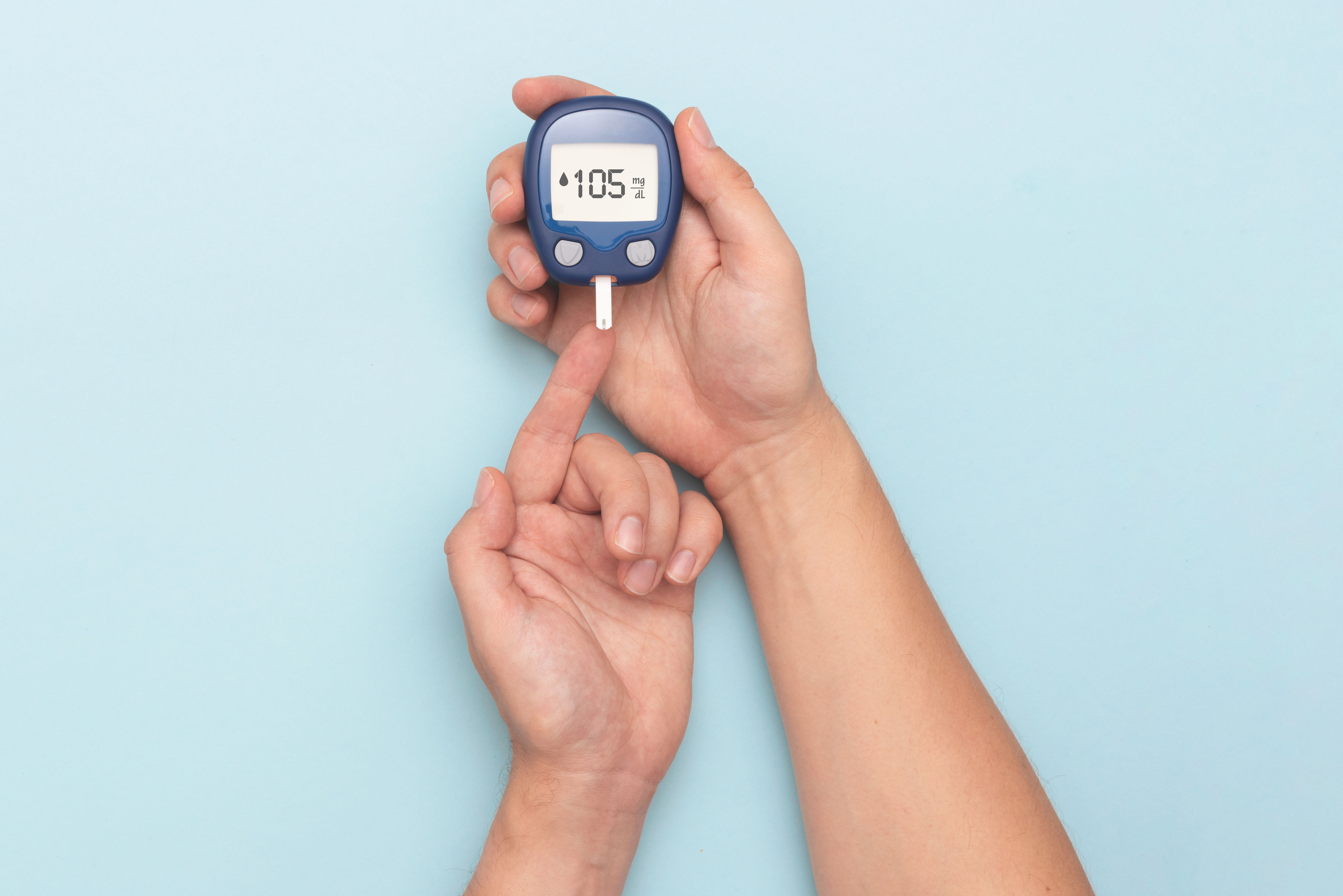Guide to Early Detection And Management Of Diabetes In Winter
Learn how to detect and manage diabetes effectively during winter, including tips to maintain blood sugar levels and overall health.

Written by Dr. Md Yusuf Shareef
Reviewed by Dr. Rohinipriyanka Pondugula MBBS
Last updated on 8th Oct, 2025

Introduction
As the temperature drops and days grow shorter, our focus shifts to staying warm and cozy. However, winter brings with it a set of unique challenges that can mask the early signs of diabetes or complicate its management. The season's tendency to encourage sedentary habits, carbohydrate-rich comfort foods, and reduced outdoor activity can silently impact blood sugar levels. For those at risk or living with diabetes, early vigilance becomes even more critical. This guide is designed to empower you with the knowledge to distinguish between common winter ailments and potential red flags for blood sugar issues. We will explore the subtle signs often overlooked in colder months, outline proactive steps for detection, and provide practical strategies for effective diabetes control throughout the winter season, ensuring you stay healthy and in command of your well-being.
Why Winter Poses Unique Challenges for Diabetes
Winter is not just a change in scenery; it triggers significant physiological and behavioural shifts that can directly affect blood glucose levels.
The Cold Weather and Its Physiological Impact
Cold temperatures can cause blood vessels to constrict, a process known as vasoconstriction, which may lead to higher blood pressure. For individuals with diabetes, who are already at an increased risk for cardiovascular issues, this is an important consideration. Furthermore, the body works harder to maintain its core temperature, which can sometimes increase metabolism and affect how the body uses insulin and processes sugar. Some studies suggest that colder weather can increase insulin resistance, making it harder for your body to use insulin effectively, thereby raising blood sugar levels.
Behavioural Changes: Diet, Activity, and Mood
This is often the most significant factor. Winter encourages behaviours that are counterproductive to blood sugar
control:
- Diet: We naturally gravitate towards hearty, warm meals that are often higher in carbohydrates and fats, think stews,
pastas, and sugary hot beverages. - Activity: The desire to stay indoors can lead to a more sedentary lifestyle, reducing the physical activity that helps
regulate blood sugar. - Mood: Reduced sunlight can contribute to Seasonal Affective Disorder (SAD) or general low mood. Stress and
depression can cause hormonal changes that elevate blood glucose levels, creating a challenging cycle.
Consult a Diabetologist for the best advice
Early Signs of Diabetes That Are Easier to Miss in Winter
Many early symptoms of diabetes can be mistakenly attributed to the winter season itself, leading to delayed diagnosis.
Overlapping Symptoms: Is It Winter Blues or a Blood Sugar Issue?
Fatigue, increased desire for sleep, and a general feeling of lethargy are hallmarks of both "hibernation mode" and uncontrolled blood sugar. When cells are deprived of glucose due to insulin issues, the body lacks energy, manifesting as persistent tiredness.
Increased Thirst and Urination in Cold Weather
Polyuria (frequent urination) and polydipsia (excessive thirst) are classic early signs of diabetes. In winter, we may feel less thirsty due to the cold, and increased urination might be mistaken for the body's response to cold (cold diuresis). However, diabetes-related thirst is unquenchable, and urination is persistent and excessive, regardless of fluid intake.
Fatigue and Lethargy: Beyond Just "Hibernation Mode"
While everyone feels a bit slower in winter, diabetes-related fatigue is profound and doesn't improve with rest. It's a result of your body's inability to convert sugar into energy efficiently. If you find your winter fatigue is debilitating and coupled with other symptoms like blurry vision or slow-healing cuts (which can be worsened by dry winter air), it's a strong indicator to get checked.
Proactive Steps for Early Detection During the Colder Months
Being proactive is the key to early detection. Winter can be the perfect time to tune into your body's signals.
Understanding Your Risk Profile
Know your risk factors. These include being over 45, having a family history of diabetes, being overweight, having high blood pressure, or a history of gestational diabetes. If you have these risk factors, seasonal check-ups become even more important.
Key Diagnostic Tests to Discuss with Your Doctor
If you suspect issues, don't wait. Speak to a healthcare professional about:
- HbA1c Test: This measures your average blood sugar levels over the past 2-3 months. It's one of the most common tests
for diagnosing diabetes. - Fasting Blood Sugar Test: This measures blood sugar after an overnight fast.
- Oral Glucose Tolerance Test (OGTT): This tests your body's response to sugar.
For convenience, Apollo24|7 offers a convenient home collection for tests like HbA1c, allowing you to get tested
without braving the cold.
The Role of At-Home Glucose Monitoring
For those diagnosed with prediabetes or at high risk, a glucometer (blood glucose meter) can be a powerful tool for early detection of patterns. Monitoring your levels at home, especially after winter meals, can provide immediate feedback and empower you to make dietary adjustments.
Get Your Health Assessed
Effective Diabetes Management Strategies for Winter
If you are living with diabetes, a tailored winter strategy is essential for maintaining glycaemic control.
Crafting a Winter-Friendly, Diabetes-Appropriate Diet
You don't have to forgo comfort food. Opt for soups with lean proteins and lots of non-starchy vegetables. Use whole grains like barley or quinoa instead of refined pasta. Enjoy warm beverages, but choose herbal teas or sugar-free options. Incorporate seasonal vegetables like spinach, mustard greens, and carrots, which are rich in nutrients and fiber.
Staying Active Indoors: Winter Exercise Ideas
Combat sedentariness with indoor exercises for diabetics. Try home workout videos, yoga, dancing, or using a stationary bike. Even simple activities like taking the stairs more often or doing household chores can help keep your blood sugar in check.
Special Attention: Foot Care in Cold, Dry Weather
Diabetes can cause neuropathy (nerve damage), reducing sensation in the feet. Combined with dry winter skin, this increases the risk of cracks, sores, and infections. Winter foot care for diabetics is crucial. Moisturise daily (but not between toes), inspect your feet thoroughly every day for any cuts or blisters, and wear warm, well-fitting socks and shoes.
Managing Stress and Mental Wellbeing
Since stress can elevate blood sugar, managing mental health is a part of diabetes care. Practice mindfulness, meditation, or connect with loved ones virtually. If you feel persistently low, consider speaking to a counsellor. If symptoms of low mood persist and seem to be affecting your diabetes management, consulting a doctor online with Apollo24|7 can provide timely support.
When to Seek Professional Help
It's crucial not to dismiss persistent symptoms. You should consult a doctor if you experience:
- Unquenchable thirst and frequent urination.
- Unexplained, significant weight loss.
- Extreme fatigue that interferes with daily life.
- Blurred vision.
- Tingling or numbness in your hands or feet.
- Sores or cuts that are slow to heal.
Conclusion
Navigating the winter months with diabetes, or its risk, requires a conscious and proactive approach. The season's unique challenges make it an ideal time to practice heightened self-awareness. By learning to distinguish between seasonal quirks and potential warning signs of blood sugar dysregulation, you take a powerful step toward early detection. Embracing winter-friendly management strategies, from dietary tweaks to indoor fitness routines, ensures that you remain in control of your health, regardless of the weather outside. Remember, knowledge and timely action are your best allies. Use this guide as a starting point for a healthier winter, and don't hesitate to seek professional guidance to create a plan that's tailored just for you.
Consult a Diabetologist for the best advice
Consult a Diabetologist for the best advice

Dr. Dhanraj K
General Physician/ Internal Medicine Specialist
25 Years • MBBS, MD Internal Medicine - Osmania Medical College, Hyderabad
Hyderabad
Apollo Hospitals Jubilee Hills, Hyderabad
(400+ Patients)

Dr. Anand Ravi
General Physician
2 Years • MBBS
Bengaluru
PRESTIGE SHANTHINIKETAN - SOCIETY CLINIC, Bengaluru

Dr Syed Mateen Pasha
General Physician
2 Years • MBBS
Bengaluru
PRESTIGE SHANTHINIKETAN - SOCIETY CLINIC, Bengaluru

Dr Darshana R
General Physician/ Internal Medicine Specialist
15 Years • MBBS, MD, DNB (Internal Medicine), Diploma in Allergy, Asthma and Immunology , Fellowship in Diabetes
Bengaluru
Apollo Clinic, JP nagar, Bengaluru
(125+ Patients)

Dr. Vivek D
General Physician
2 Years • MBBS
Bengaluru
PRESTIGE SHANTHINIKETAN - SOCIETY CLINIC, Bengaluru
Consult a Diabetologist for the best advice

Dr. Dhanraj K
General Physician/ Internal Medicine Specialist
25 Years • MBBS, MD Internal Medicine - Osmania Medical College, Hyderabad
Hyderabad
Apollo Hospitals Jubilee Hills, Hyderabad
(400+ Patients)

Dr. Anand Ravi
General Physician
2 Years • MBBS
Bengaluru
PRESTIGE SHANTHINIKETAN - SOCIETY CLINIC, Bengaluru

Dr Syed Mateen Pasha
General Physician
2 Years • MBBS
Bengaluru
PRESTIGE SHANTHINIKETAN - SOCIETY CLINIC, Bengaluru

Dr Darshana R
General Physician/ Internal Medicine Specialist
15 Years • MBBS, MD, DNB (Internal Medicine), Diploma in Allergy, Asthma and Immunology , Fellowship in Diabetes
Bengaluru
Apollo Clinic, JP nagar, Bengaluru
(125+ Patients)

Dr. Vivek D
General Physician
2 Years • MBBS
Bengaluru
PRESTIGE SHANTHINIKETAN - SOCIETY CLINIC, Bengaluru
More articles from Diabetes
Frequently Asked Questions
1. Why does my blood sugar tend to be higher in the winter?
This is often due to a combination of factors: reduced physical activity, consumption of more carbohydrate-rich comfort foods, and the body's physiological response to cold, which can increase insulin resistance. Stress from the holidays and seasonal mood changes can also play a role.
2. What are the best indoor exercises for someone with diabetes?
Excellent low-impact indoor exercises for diabetics include brisk walking on a treadmill, stationary cycling, yoga, Pilates, bodyweight exercises (squats, lunges), and dancing. The goal is to stay moving for at least 150 minutes per week.
3. Can vitamin D deficiency in winter affect my diabetes?
Yes. Limited sun exposure in winter can lead to vitamin D deficiency. Some research suggests a link between low vitamin D levels and increased insulin resistance. It's a good idea to discuss testing and supplementation with your doctor. Apollo24|7 offers a convenient home collection for tests like vitamin D.
4. I feel more thirsty in winter. Is that normal?
While we often feel less thirsty in the cold, feeling excessively or unquenchably thirsty (polydipsia) is not typical and is a classic early warning sign of type 2 diabetes, especially if accompanied by frequent urination.
5. How can I prevent dry, cracked feet during winter if I have diabetes?
Practice diligent winter foot care for diabetics: wash and dry feet daily, apply a good moisturiser (avoiding between the toes), wear warm socks made of moisture-wicking materials, and inspect your feet every single day for any signs of cracking or injury.




